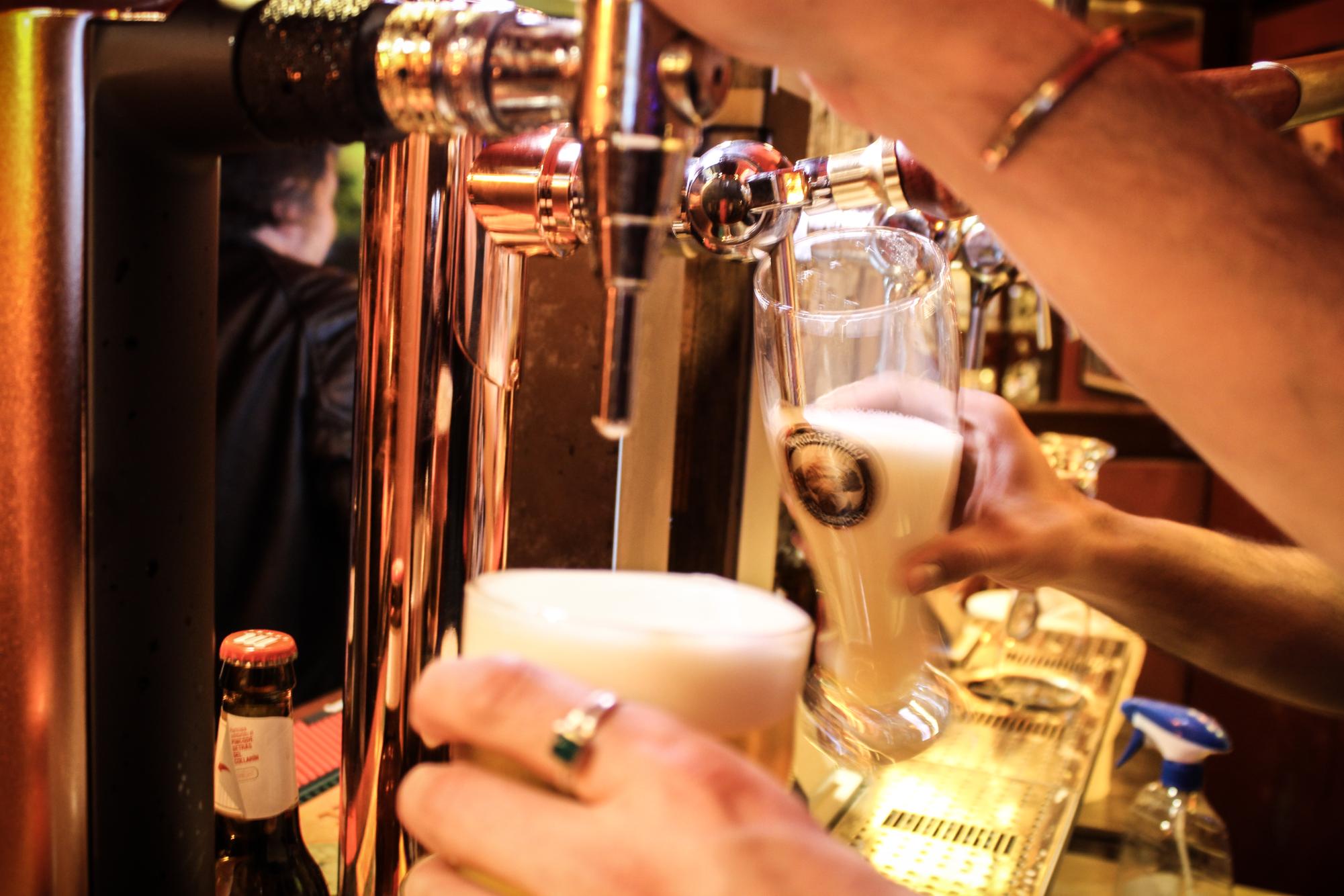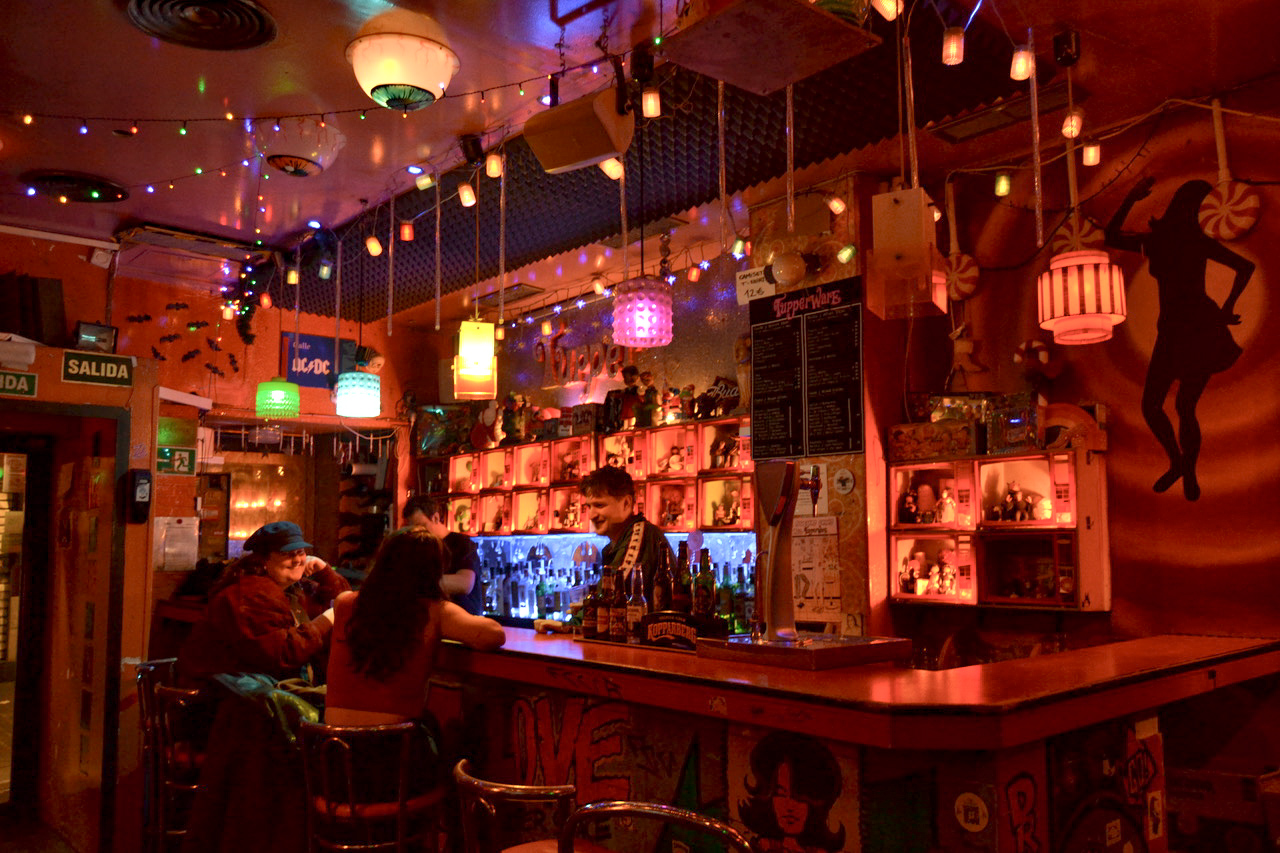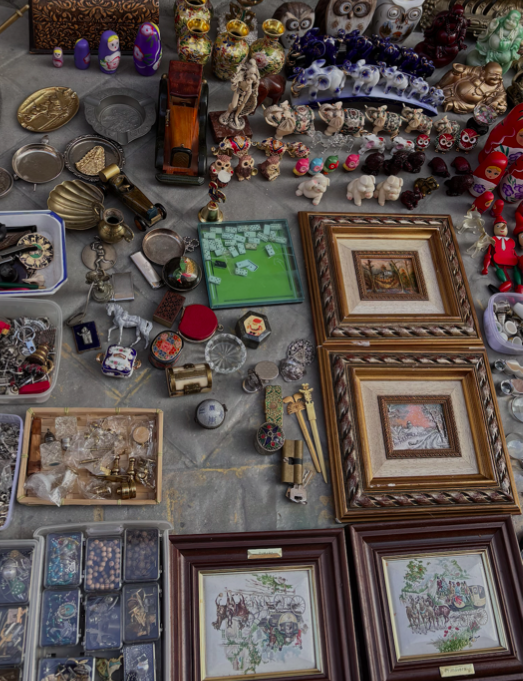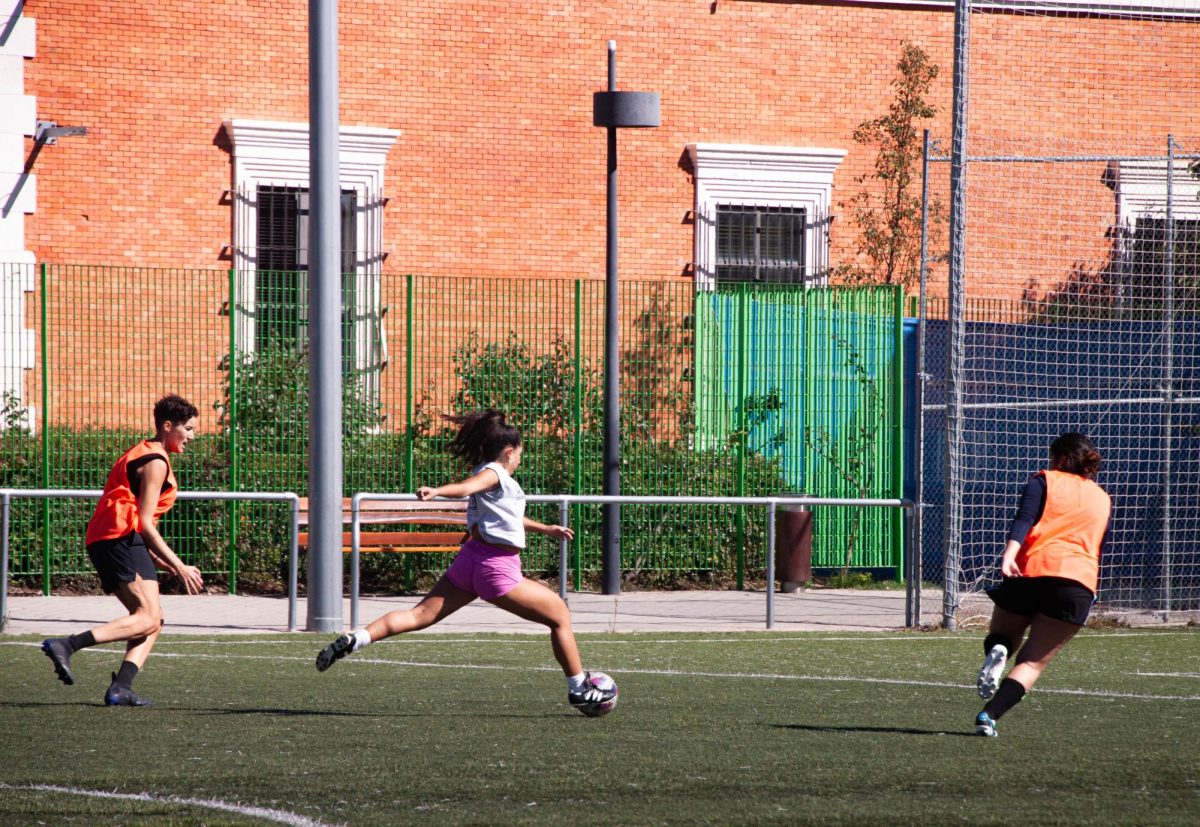Each semester international students say goodbye to frat parties or other drinking customs of their home countries and encounter the leisurely crowds sipping beer or tinto de verano with patatas bravas at Madrid’s terrazas.
Chris Moussa, a senior at SLU-Madrid who moved to Spain from Dubai five years ago, sums up this Spanish scene in digestible terms:
“Spain’s drinking culture can be compared to drinking wine, you sip it slowly and enjoy it,” he says. “Instead, to me, places such as the U.S. have a drinking culture that I would compare to being like taking shots, drinking fast to feel drunk.”
Although Spain’s legal drinking age is 18, young Spaniards say they typically start drinking when they are 16, usually with either their family or friends. There are no taboos. Instead of secret parties in basements, many Spaniard say they drink for social reasons, to accompany food, and to enjoy the taste.
Spaniards drink about twice as much alcohol annually per capita as people around the world, Expatica, an Expat information portal, reported. In 2018, Spaniards drank 12.7 liters of alcohol per head, whereas the global average was 6.2 liters. This is also slightly higher than the EU average of 11 liters, and just below Germany’s average of 12.9 liters. Some of those liters may have been gulped during botellones, those outdoor drinking fests that annoy Madrid residents who llive near popular public squares. But they also reflect Spain’s prestigious wine industry, booming club scene and trendy restaurants.
As one travel guide puts it: “Bars in Spain are places to socialize, not to get drunk.”
Jack Pollard, a study abroad student from Cal Berkley, said he noticed that young Madrileños don’t pregame before they go out to clubs or bars. They drink when they arrive. He said he was also surprised to see locals drink casually throughout the day.
“When I leave my house for school around two in the afternoon, I always see bars full of adults drinking and hanging out,” says Pollard. “When do they work?”

Paloma Alfonso, a Madrileño who works at El Corte Inglés, offers an answer:
“A typical day at work here in Spain involves working, a lunch break, where me and my coworkers get tapas to split such as croquettes, ensaladilla rusa, tortilla and a glass of beer or wine,” says Alfonso.” Then after lunch we work more, and later go out to dinner with the same people to have food and drinks again.”
Alfonso also mentions a word commonly used in Spain, “tardeo,” which is something people say when they drink from lunch until dinner.
Santiago Trujillo, a bartender at the popular restaurant Cherry Pecas, has noticed a drinking culture clash between Spaniards and international students.
“Many times Spanish students come in and grab a couple of beers with their friends, especially since here at Cherry Pecas we offer a beer tower serving three-to-four people, which is a popular thing to order among the students,” Trujillo said. “On the other hand, I tend to see many international students come in and order a copa, such as a rum and Coke or vodka RedBull. I have been told by some international students that they get that instead of other drink options because it is cheaper for a larger amount of alcohol.”
Those ordering choices are typical of the drinking attitudes in the U.S., study abroad students say.
“In Saint Louis, Missouri, me and my friends only drink if we are going to a party or event,” says Julia Chapman, who studying abroad at SLU-Madrid from the Missouri main campus. “But since drinking is mainly only done before partying, I don’t, but many people seize the opportunity to let loose and go all out, which almost every time results in the majority of people at a party getting black-out drunk.”
This contrasts to the daily rhythms of drinking observed by Madrid resident Javier Torres. “For us locals, or I should say for all Spaniards, drinking isn’t only done on special occassions but it is more incorporated in everyone’s everyday life,” Torres says. ”Just the other day I met my neighbor at the Mercadona and invited him back to my house to talk and enjoy a glass of wine on my terrace.”
Duda Mazzini, a permanent student at Saint Louis University, was born in Brazil and has lived in Miami, Italy, and now Spain. She says that out of all the places she has lived in, Spain is the place where she notices the most frequent and casual drinking.
“When I started to go to school here, I was shocked by the fact that Spanish students often go to a bar in between classes to get a drink,” says Mazzini.”I mean, they even sell beer at school!.”







